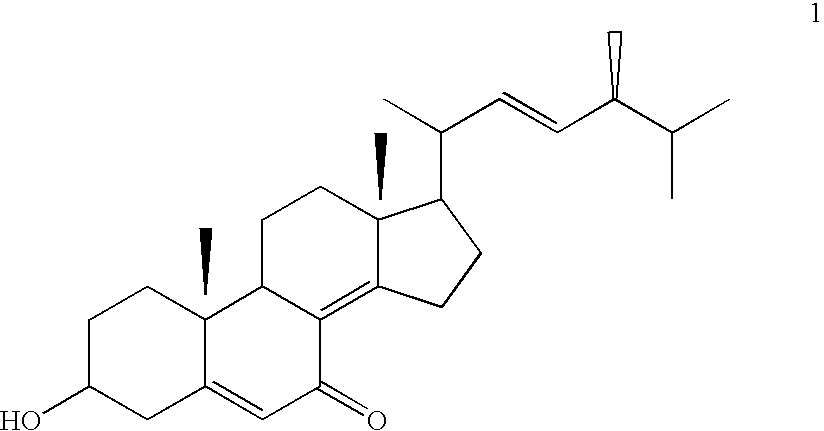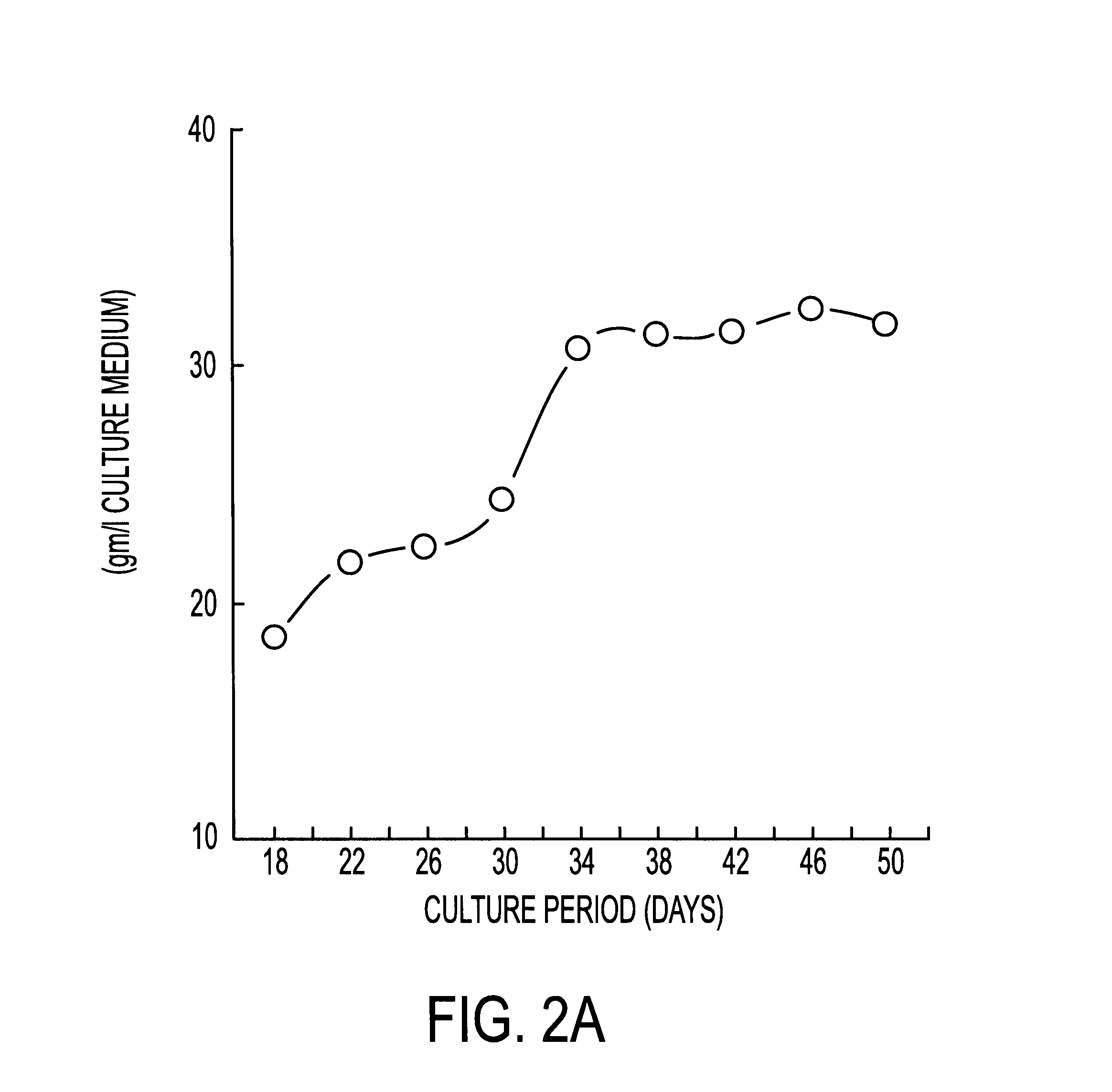Method for propagating fungi using solid state fermentation
a technology of solid state fermentation and fungi, which is applied in the field of propagating fungi using solid state fermentation, can solve the problems of low yield of microorganisms, difficult to obtain wild cordyceps sinensis, and difficult to obtain, and achieve the effects of reducing the amount of h1a, increasing the production of active materials/metabolites, and increasing the production of mycelium dry weigh
- Summary
- Abstract
- Description
- Claims
- Application Information
AI Technical Summary
Benefits of technology
Problems solved by technology
Method used
Image
Examples
example 1
Preparation of an SSF Medium
Table II shows an SSF medium which is suitable for Cordyceps sinensis propagation and production of H1A / ergosterol:
The SSF medium was prepared by mixing composition A with a solid base and heating the mixture to boiling so that water could be absorbed by the solid base. It was preferred that the water content in the solid base mixture was about 50%. The mixture was allowed to cool down. Calcium carbonate or gypsum was then added to the mixture. The final mixture was granulated to form the SSF medium granules. The granules were packaged into an SSF bottle which was sealed at the top. The SSF bottle was then autoclaved at 121.degree. C., 1.5 kg pressure, for 1-2 hours, cooled down to room temperature, and placed in the incubation room under sterile condition.
example 2
HPLC Analysis of Fungal Metabolites
There were two groups of compounds which had been quantitatively and qualitatively detected by HPLC. The first group included H1A and ergosterol. The second group included nucleosides, i.e., uracil, uridine, guanosine, and adenosine.
H1A and ergosterol are polar / hydrophobic molecules. They could be effectively extracted by methanol (or other low-carbon alcohol), acetone, diethyl ether, ethyl acetate, chloroform, or methylene chloride. According to Lin et al., U.S. Pat. No. 5,582,828, the most desired solvents for H1A and ergosterol extraction were methanol and ethyl acetate. Nucleosides are water soluble compounds and mostly insoluble in alcohol. Therefore, to study the content of nucleosides, the dried fungal powder was dissolved in water, other than methanol or ethyl acetate.
Prior to the analysis H1A / ergosterol using HPLC, the methanol extract of Cordyceps sinensis was purified with a silica gel chromatography eluted with ethyl acetate / n-hexane (1...
example 3
Comparative Studies of H1A-3 / Ertosterol / nucleoside Production in Cordyceps sinensis Strain CS-36421 and VGH-TS-15
Productions of H1A-3 and ergosterol between Cordyceps sinensis strain CS-36421, which was cultivated by SSF, and strain VGF-TS-15, which was also cultivated by SSF, were analyzed by RP-HPLC. The method of analyzing H1A-3 / ergosterol was described in Example 2(1), supra.
The distributions of H1A-3 and ergosterol in Cordyceps sinensis strains CS-36421 and VGH-TS-15 were analyzed by first extracting the mycelia samples in ethyl acetate. Then, an equal amount of n-hexane (or petroleum ether) was added. The resultant mixture was filtered through glass wool before passing through a silica gel column. The silica gel column was continuously eluted with ethyl acetate / n-hexane (1:1, v / v). The eluents were sub-divided into 6 fractions and concentrated for HPLC analysis. Table III shows the detection of H1A-3 and ergosterol in Cordyceps sinensis strains CS-36421 and VGH-TS-15. Lot num...
PUM
 Login to View More
Login to View More Abstract
Description
Claims
Application Information
 Login to View More
Login to View More - R&D
- Intellectual Property
- Life Sciences
- Materials
- Tech Scout
- Unparalleled Data Quality
- Higher Quality Content
- 60% Fewer Hallucinations
Browse by: Latest US Patents, China's latest patents, Technical Efficacy Thesaurus, Application Domain, Technology Topic, Popular Technical Reports.
© 2025 PatSnap. All rights reserved.Legal|Privacy policy|Modern Slavery Act Transparency Statement|Sitemap|About US| Contact US: help@patsnap.com



